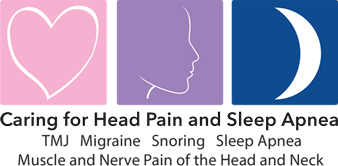
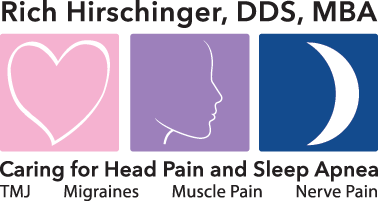
Diplomate American Board of Orofacial Pain
9615 Brighton Way, Suite 323
Beverly Hills, CA 90210
888.981.8981
Jaw Closing Muscles That Refer Pain Into Teeth
The closing muscles of the jaw are some of the strongest muscles in the human body. When measured on a pounds per square inch basis, the superficial masseter is the strongest muscle in the human body. All muscles get tired and fatigued and have tipping points when they get overworked. These are the muscle referral patterns of the muscles that close the jaw, activated when you are clenching, grinding, chewing gum, biting your nails, chewing any object, and any other occasion when the teeth are touching. For all these reasons, Dr. Hirschinger invented the gentle jaw, a passive stretching device to help stretch the muscles that close the jaw. You can learn more at www.gentlejaw.com.
The site of the pain is in red, and the source of the pain is indicated by the black "X." The denser areas of red are not necessarily more painful than the less dense areas, but they are the more common areas of referred pain.
If you prefer not to scroll through the whole page, please click on a link below to go to that section of the page.
Pain referred to upper molars
Pain referred to lower molars
Pain referred to upper front teeth
Pain referred to upper middle teeth
Pain referred to all the upper teeth
Pain Referred to Upper Molars
Two of the muscles that close that jaw can cause referred pain in the maxillary (upper) molars. They are the upper part of the superficial masseter muscle and the posterior part of the temporalis muscle.
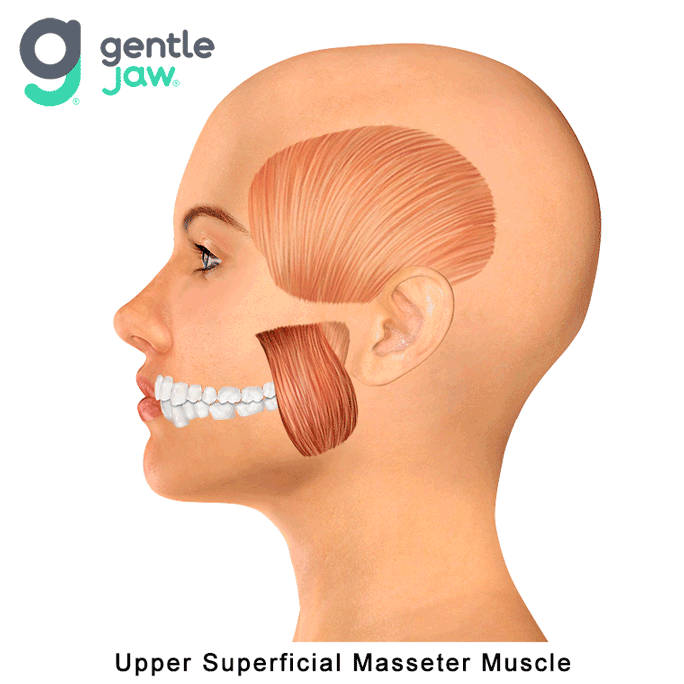

Pain Referred to Lower Molars
The lower part of the superficial masseter muscle can cause referred pain in the mandibular (lower) molars.

The trapezius muscle, which is the shoulder muscle can refer pain to the angle of the jaw. Although it is not a closing muscle of the jaw, the trapezius muscle must be ruled out as a source of the pain when patients complain of lower jaw pain.

Pain Referred to the Upper Front Teeth
The anterior part of the temporalis muscle can cause referred pain in the maxillary (upper) anterior teeth.
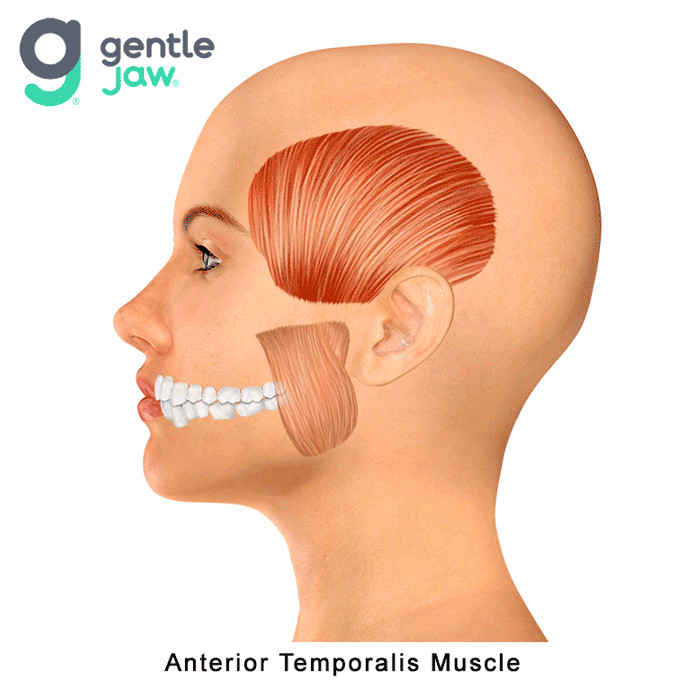
Pain Referred to the Middle Front Teeth
The middle part of the temporalis muscle can cause referred pain in the maxillary (upper) canines and premolar teeth.
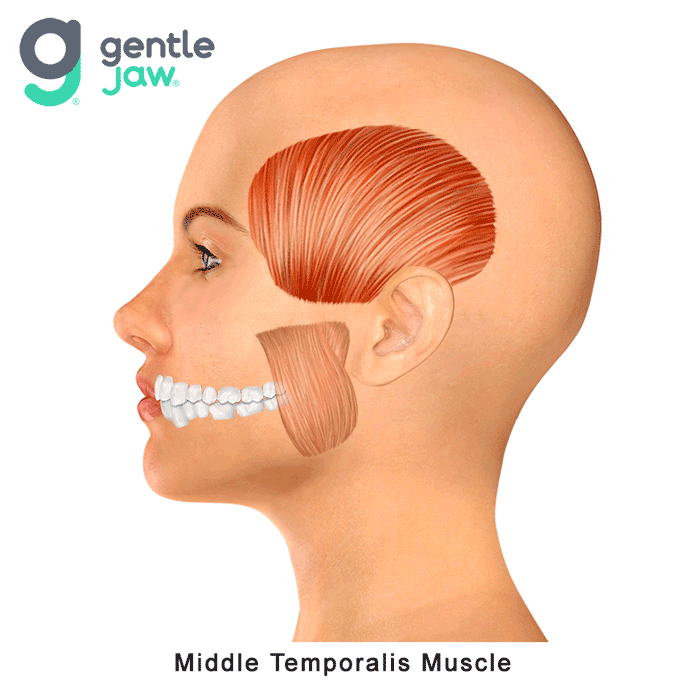
Muscle Referral Pattern of the Temporalis Muscle
When you combine the muscle referral patterns of all the temporalis muscle fibers, you can see that it can cause referred pain in all of the maxillary (upper) teeth.
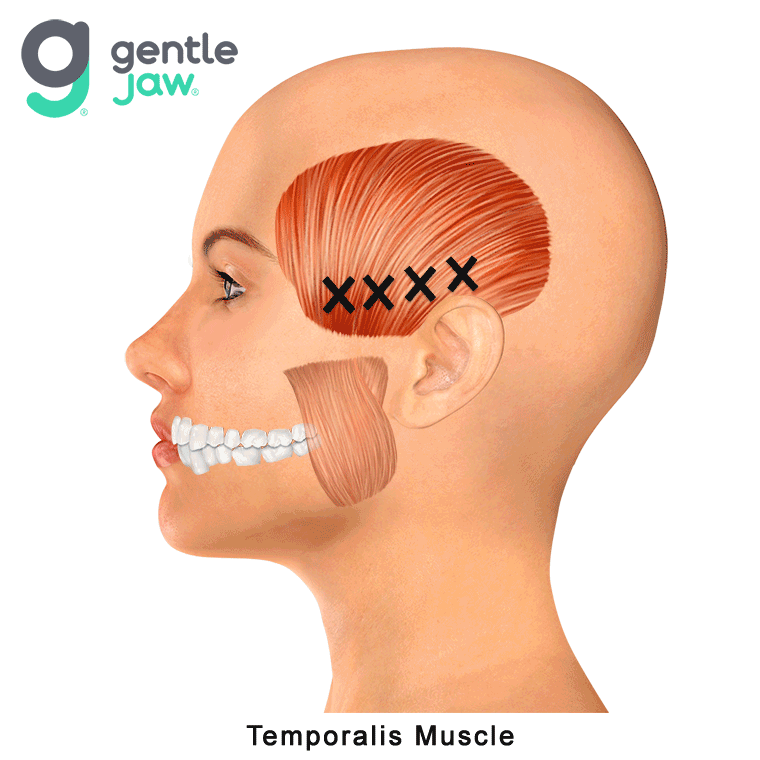
Learn about the muscle referral patterns of the muscles that refer pain into the TMJ.
Learn about appliances for TMJ.
Learn about Botox treatment for TMJ and TMD.
All images are copyright of gentle jaw company, Inc., and were created under the direction of Dr. Hirschinger. They may be used by asking permission by completing the form at this page on the gentle jaw website, and they must not be edited. All rights reserved.






